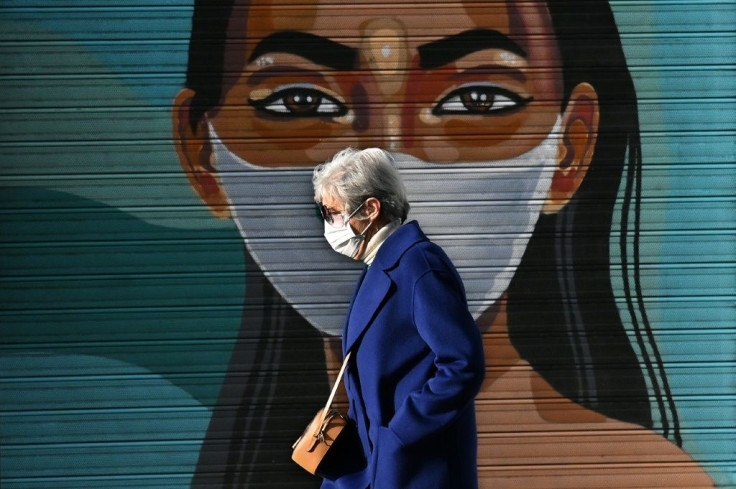Despite CDC Guidance, Virus Experts Suggest Americans Wear Masks In Public
KEY POINTS
- New CDC guideline said fully vaccinated people no longer need to wear masks
- Experts say masks should be worn in indoor and outdoor settings until 2022
- Avoid going maskless in settings with unvaccinated people: Epidemiologists
Hundreds of health experts still suggest wearing masks for at least another year despite the latest guidance from federal health officials saying that people no longer need face coverings in most settings.
The U.S. Centers for Disease Control and Prevention on Thursday said people who are fully vaccinated against COVID-19 no longer need to wear face masks in indoor and outdoor settings. The updated guidance also removed the need to observe social distancing.
“Today, CDC is updating our guidance for fully vaccinated people," CDC Director Dr. Rochelle Walensky said Thursday at a White House COVID-19 briefing. "Anyone who is fully vaccinated can participate in indoor and outdoor activities, large or small, without wearing a mask or physical distancing. If you are fully vaccinated, you can start doing the things that you had stopped doing because of the pandemic."
Despite the guidance, 80% of epidemiologists believe Americans should still wear face coverings in public indoor settings until 2022. About 88% of health experts also advise wearing face masks in large outdoor settings, even for fully vaccinated people, an informal survey by The New York Times found.
“Unless the vaccination rates increase to 80 or 90 percent over the next few months, we should wear masks in large public indoor settings,” Vivian Towe, a program officer at the Patient-Centered Outcomes Research Institute, told the publication.
Many epidemiologists agreed with the CDC’s decision to no longer require mask-wearing as long as people were fully vaccinated. However, the health experts advised against the recommendation that vaccinated people can stop masking when in settings with an unknown number of unvaccinated people.
Many of the survey respondents also argued that mask-wearing was still important to protect people at high risk of developing severe cases of COVID-19, such as children and those with pre-existing medical conditions.
“Until community transmission is lower, it protects the whole community and the other people in the room to wear masks,” Julia Raifman, an assistant professor of public health at Boston University, said.
The responses in the survey came from 723 epidemiologists and were submitted between April 28 and May 10, before the CDC released its new guidance.

© Copyright IBTimes 2025. All rights reserved.






















